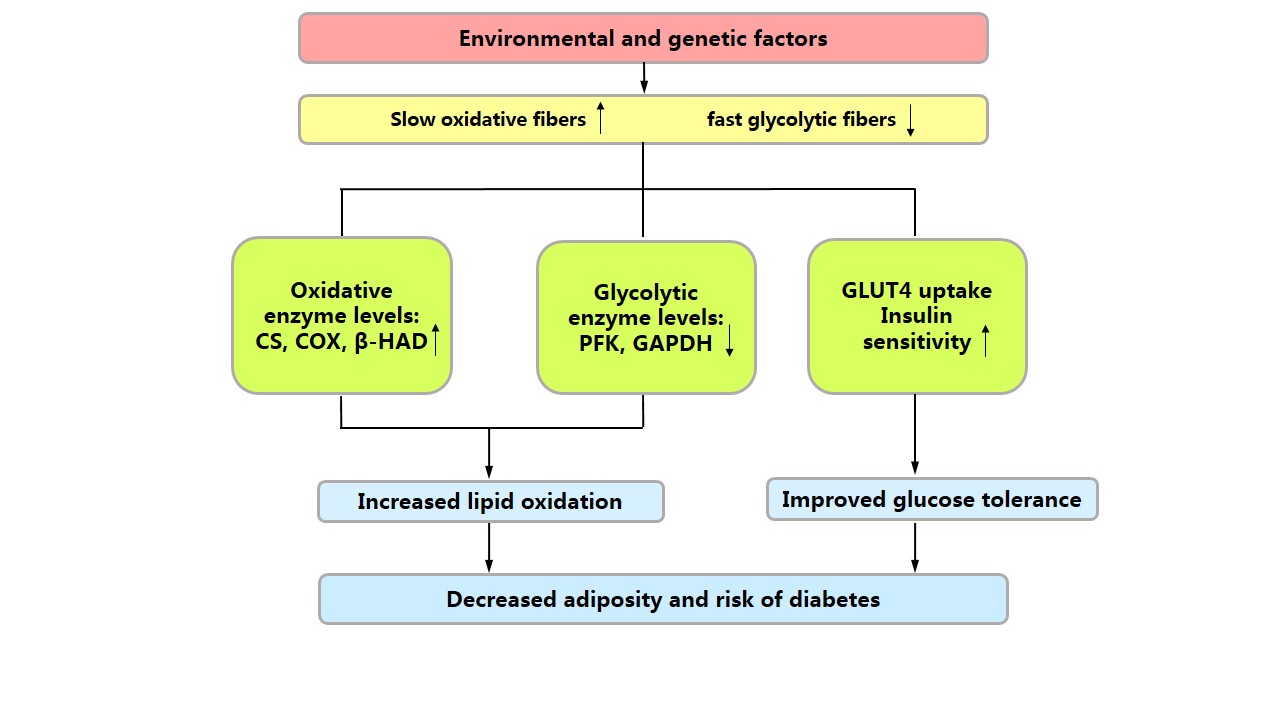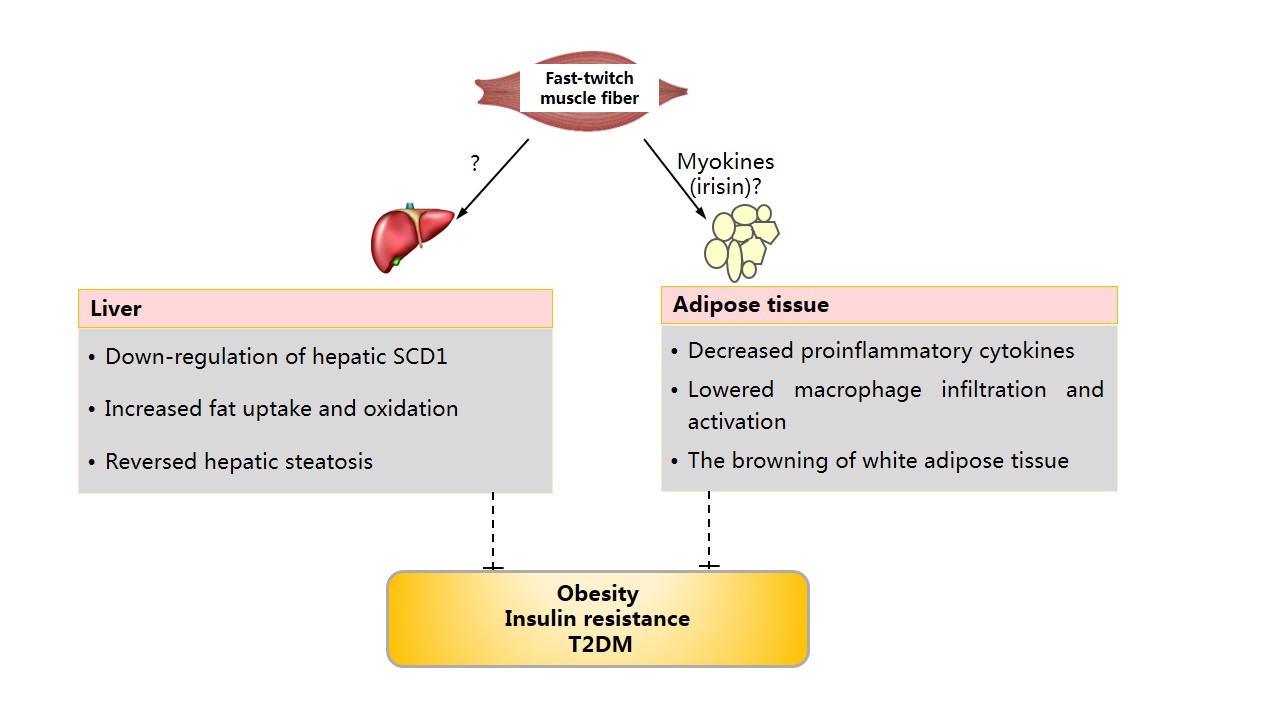Targeting Myofibers in the Treatment of Obesity and Diabetes
Obesity rises at an alarming rate and is a major health concern in both industrialized and developing countries. Most importantly, it is a major risk factor in the development of numerous chronic diseases such as type 2 diabetes mellitus (T2DM). Therefore, obesity has been viewed as a chronic disease that requires medical prevention and treatment. Bearing this in mind, a framework should be now developed to aid in optimizing the prevention of obesity and T2DM, with the hope of curbing this epidemic.
Recently, a team of researchers from China Agricultural University, the Institute of Subtropical Agriculture, Chinese Academy of Sciences (ISA) highlight myofibers as potential therapeutic targets for obesity and T2DM. Mammalian skeletal muscles are composed of two major fiber-types (I and II) that differ in terms of size, metabolism, and contractile properties. In general, slow-twitch type I fibers are rich in mitochondria and have a greater insulin sensitivity than fast-twitch type II skeletal muscles. Although not widely appreciated, a forced induction of the slow skeletal muscle phenotype may inhibit the progress of obesity and diabetes (Figure 1). This potentially forms the basis for targeting slow/oxidative myofibers in the treatment of obesity. In this context, a better understanding of the molecular basis of fiber-type specification and plasticity may help to identify potential therapeutic targets and hence improve human health and fitness. Intriguingly, in contrast to the salutary effects of slow-twitch muscle fibers described above, several studies report that increased mass and function of glycolytic muscle fibers have beneficial effect on obesity and T2DM (Figure 2). Therefore, for the use of myofibers as a potential therapeutic target, the major outstanding question is that under what circumstances, increasing the percentage of glycolytic myofibers exerts beneficial roles. Further studies are warranted to understand the seemingly conflicting findings.
The research was the jointly supported by the National Basic Research Program of China (2013CB127305, 2012CB124704), the Nature Science Foundation of Hunan Province (S2014J504I), the Youth Innovation Promotion Association CAS (2016326), the Major Project of Hunan Province (2015NK1002) and the National Science and the Technology Ministry (2014BAD08B11).
The study entitled “Metabolic Control of Myofibers: Promising Therapeutic Target for Obesity and Type 2 diabetes” has been accepted in February 2017 of Obesity Reviews, details could be found at http://onlinelibrary.wiley.com/doi/10.1111/obr.12530/full

Figure 1. Consequences of increased slow oxidative muscle fiber type.

Figure 2. Possible mechanisms of beneficial effects of increased fast glycolytic myofibers on the metabolic syndrome.
Contact: Yin Yulong
E-mail: yinyulong@isa.ac.cn
Institute of Subtropical Agriculture, Chinese Academy of Sciences
Download attachments: